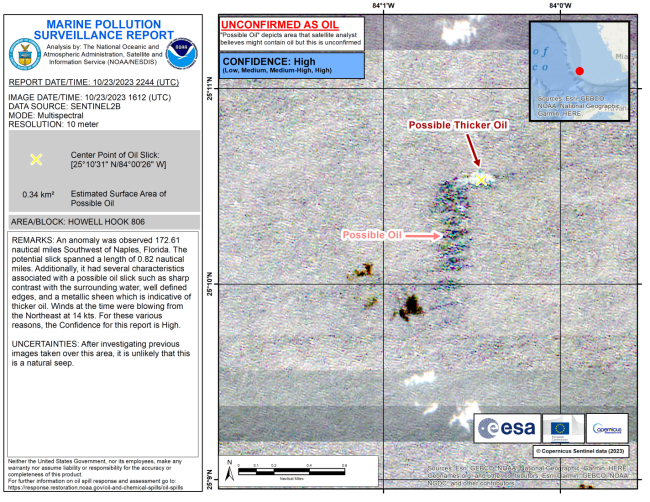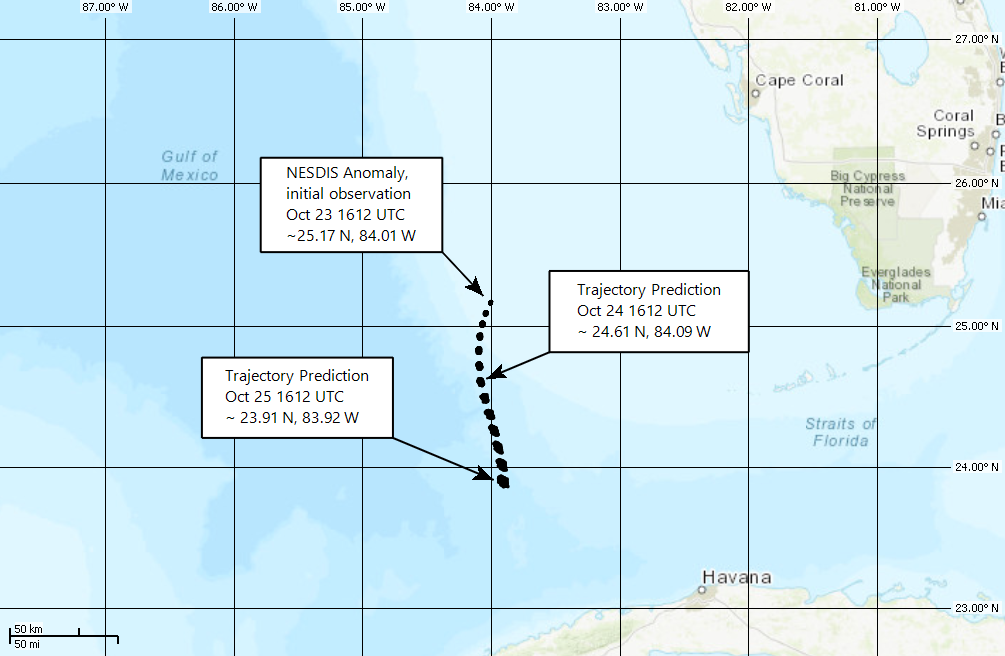Every month, OR&R’s Emergency Response Division provides scientific expertise and services to the U.S. Coast Guard (USCG), ranging from running oil spill trajectories to estimate where a spill may spread; to identifying possible effects on wildlife and fisheries; to estimating how long oil may stay in the environment. We also get requests to track and model other floating objects, such as log booms or shipping containers that have broken free, whale carcasses, fish die-offs, and algal blooms.
So far this year, OR&R has provided support for 141 incidents. During October 2023, OR&R provided response support for 23 incidents, including 16 new incidents in six different states and two in the U.S. Virgin Islands (a grounded vessel and a storage tank spill at a power plant—both in St. Thomas).
The 16 new incidents included 15 oil spills and one mystery material. The mystery spill was a white milky substance in a drainage canal in Louisiana. The substance was not identified.
OR&R staff prepared 196 new incident reports and documents, including eight fate and trajectory analyses. Cumulatively, these incidents posed an approximate risk of more than 162,000 gallons of oil and an unknown amount of chemicals.
(Note: All spill volumes are approximate and based on initial information that may be updated after further investigation.)
Here are some of October’s notable incidents:
Well Blowout in Little Lake; Cut Off, Louisiana
On October 21, an Extex well was reported as leaking an estimated 10-15 barrels of crude oil and natural gas condensate into Little Lake, Louisiana. Later that day, the release was secured; however, a large area of water was impacted by sheen, and shoreline impacts were expected. Emulsified oil was noted in wetlands, recoverable oil along rock jetties, and oil trapped by booms.
The company deployed a containment boom around the well structure, as well as sorbent boom, wash pumps, skimming and other equipment. On October 24, a number of agencies involved in the response—USCG, Louisiana Department of Wildlife and Fisheries, Louisiana Department of Environmental Quality, Louisiana Department of Natural Resources, and NOAA—visited areas with sheen and emulsified oil that were identified based on overflight imagery and on-water assessment.
The Louisiana Department of Wildlife and Fisheries had no concerns for wildlife. NOAA oceanographers and the Emergency Response Division’s Scientific Support Coordinator provided the USGS drone imagery and on-site assistance over the next days to ensure the sheen was naturally dissipating and the emulsified product had been removed. No further overflights were requested.
Satellite Imagery Detects Suspected Oil Spill, Gulf of Mexico
The Marine Pollution Surveillance Program—the result of collaboration between OR&R and its partners in NOAA NESDIS (National Environmental Satellite, Data, and Information Service)—enables OR&R’s Emergency Response Division (ERD) to use satellite information for its work in oil spill response and monitoring.
As part of the program, specialists in NESDIS’ Satellite Analysis Branch (SAB) analyze synthetic aperture radar (SAR) and multi-spectral satellite imagery on a 24/7 basis for accidental and intentional oil discharges within U.S. waters. When anomalies are detected, SAB analysts produce Marine Pollution Surveillance Reports (MPSRs) that are used by a number of agencies, including scientists in ERD, and are publicly available.
On October 24, SAB analysts notified the USCG regarding an anomaly detected in the southeast Gulf of Mexico,. It spanned a length of 0.82 nautical miles and had several characteristics associated with a possible oil slick, such as sharp contrast with the surrounding water, well defined edges, and a metallic sheen, which is indicative of thicker oil. For these and other reasons, the confidence for this report was high. Additionally, previous images taken over this area indicated that it was unlikely to be a natural seep.
ERD provided several spill trajectories to estimate the movement of the anomaly and inform USGS’ overflight of the area As sometimes happens, no oil was observed during overflight and no further action was taken.
Cargo Vessel MV Bonnie G aground; St. Thomas, U.S. Virgin Islands
On October 4, the 195-foot cargo vessel, MV Bonnie G, reported that it ran aground south of Cyril E. King Airport in St. Thomas, U.S. Virgin Islands, and was taking on water in its engine room. The 42-year-old former offshore supply vessel was operating as a roll on/roll off ship, carrying wheeled cargo between San Juan, the British Virgin Islands, and the U.S. Virgin Islands. Despite rough surface conditions during the passing Tropical Storm Philippe, a USCG rescue craft was able to provide assistance, rescuing all 12 people aboard and transporting them to Crown Bay Marina.
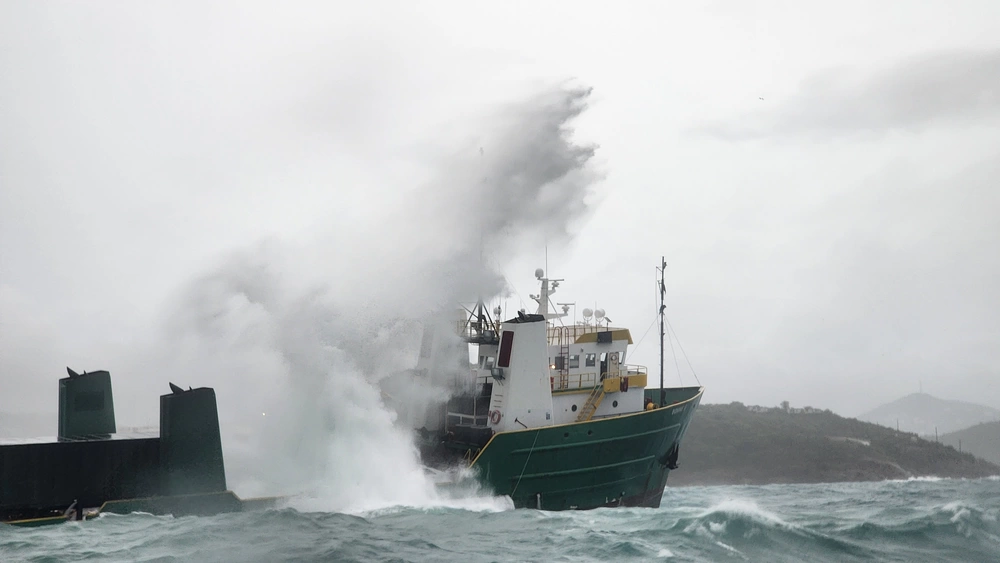
Coast Guard Marine Safety Detachment and response personnel in the U.S. Virgin Islands worked with the ship owner to assess the pollution threat. The vessel was reported to have approximately 13,000 gallons of fuel and approximately 250 gallons of lube oil onboard, and it was carrying six cars, a truck, a trailer, and two pallets of cargo.
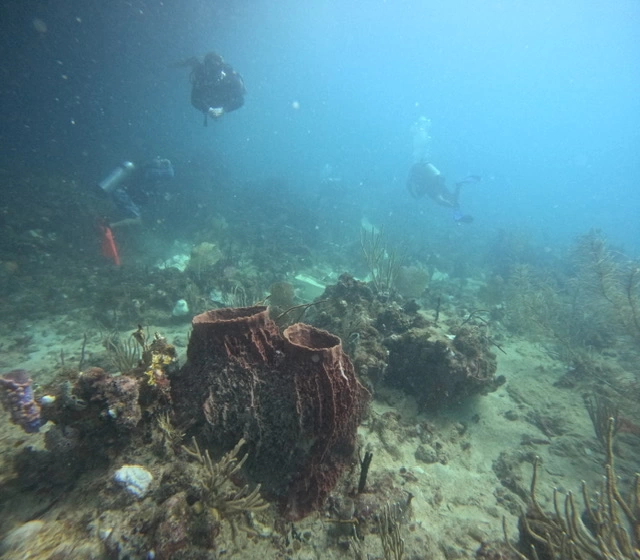
Response teams boomed off the Bonnie G as a precaution against a spill, then began pumping off the vessel's tanks. Divers also removed thousands of pounds of debris from the coral reef around the ship.
During the weekend of November 28, a salvage company pumped out the vessel’s tanks using compressed air while pumping water out of the engine room and steering compartments. Two tugs were deployed to the scene to pull the Bonnie G off the reef and tow it safely to a nearby pier in St. Thomas for inspection. No releases of pollution were noted during the vessel refloat, extraction, and tow/transit to port.
The pollution mitigation and removal plan for the Bonnie G was coordinated by the Coast Guard in conjunction with local government partners, including experts from the U.S. Virgin Islands Department of Planning & Natural Resources, U.S. Fish and Wildlife Service, and NOAA, as well as the responsible party, and private oil spill removal organizations and salvage companies.
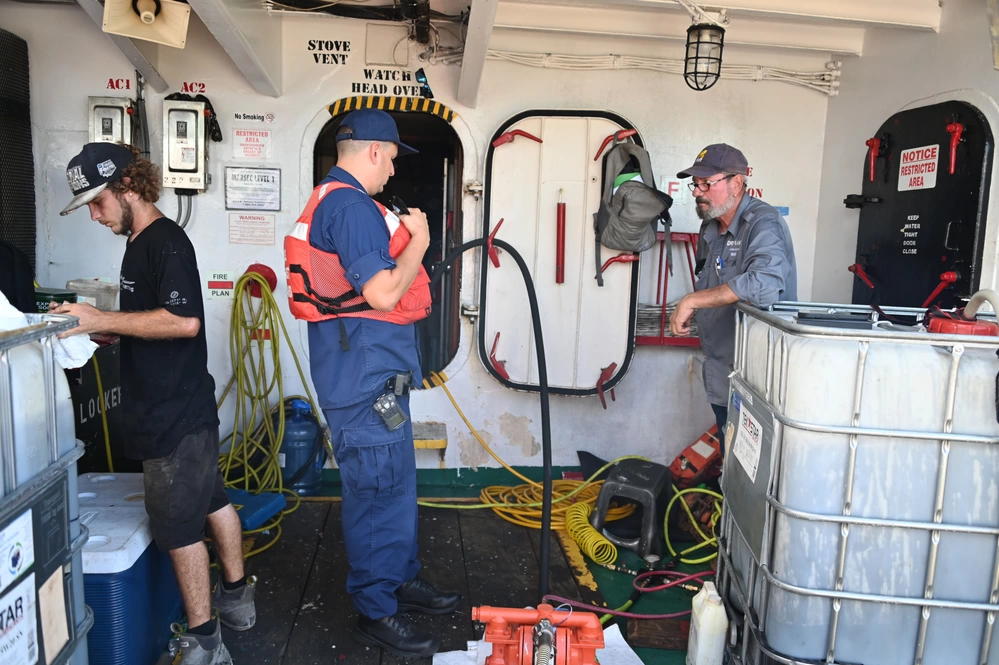
The shipowner and the salvors will continue working to remove the vessel's remaining oil, offload the cargo, and repair the vessel. The NOAA Restoration Center will schedule an on-site dive assessment of the area. The Coast Guard continues its investigation into the circumstances and cause of the incident.
Here is the complete list of October’s incidents. Click on the links to find out more:
- Diesel Release from Sunk Tug Vessel; Steamboat Slough, Bethel, AK
- Diesel Release at Virgin Islands Water & Power Authority Facility; St. Thomas, USVI
- Semi-derelict Fishing Vessel Sunk; Sitka, AK
- Jet Fuel Spill at Norfolk Naval Shipyard; Norfolk, VA
- Tug Vessel Sunk; Tulalip Bay Marina, WA
- Crude Oil Discharge from Flowline into Marsh; Galliano, LA
- Satellite Imagery Detects Suspected Oil Spill; SE Gulf of Mexico, NW of Key West, FL
- Well Blowout in Little Lake; Cut Off, LA
- Spill of Crude Oil from Flowline into Marsh; Centerville, LA
- Mystery Discharge Eden Isle; Slidell, LA
- Mystery Tar Balls; Bandon, OR
- Barge on Fire in Grand Bay; Boothville-Venice, LA
- Sunken Vessel in Kake Harbor; Kake, AK
- Crude Oil Discharged into Trench from Well Flowline; Louisiana
- Barge Discharges Heavy Fuel Oil into Intercoastal Waterway; Franklin, LA
- Cargo Vessel MV Bonnie G aground; St. Thomas, USVI

